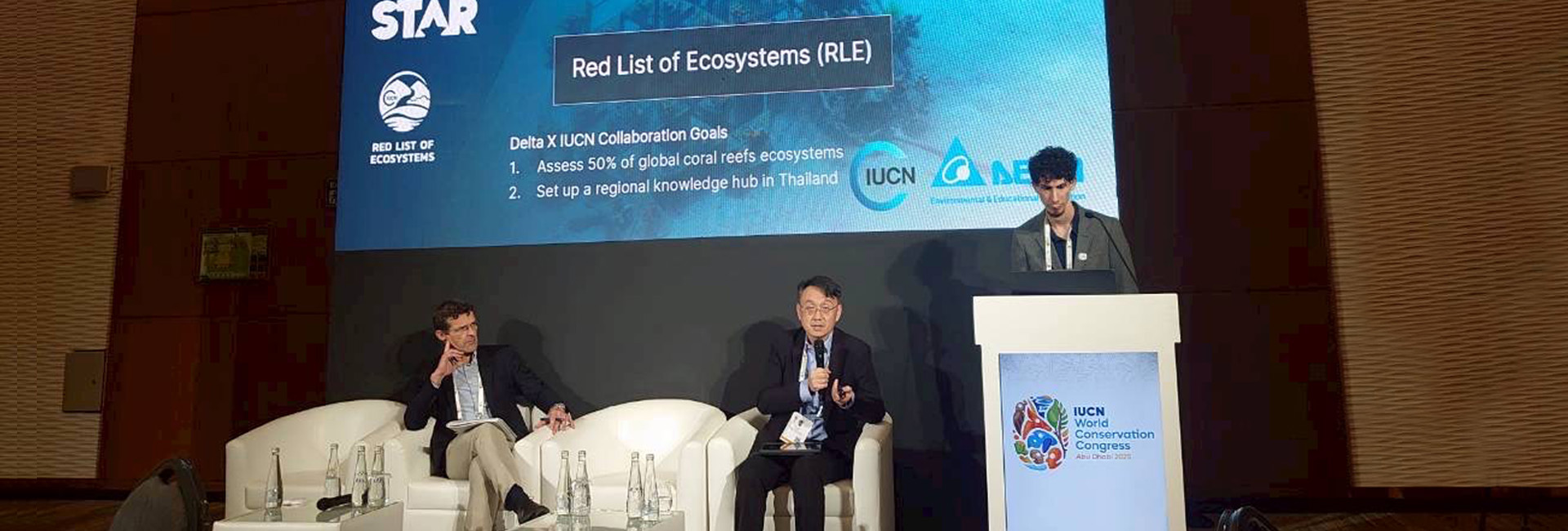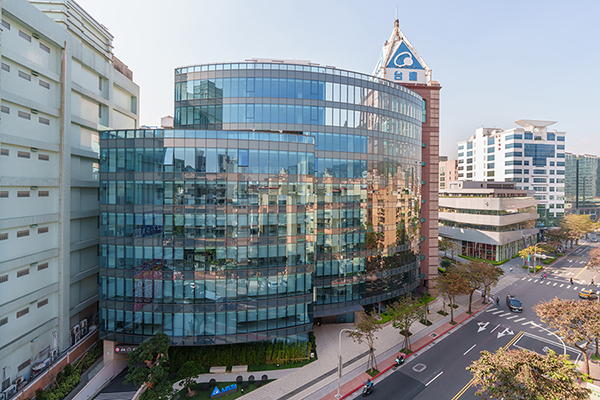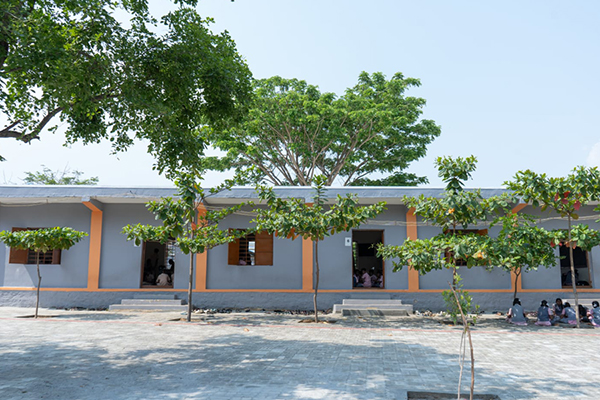Delta invited to participate in the IUCN world conservation congress
In October, the quadrennial conservation event -- the IUCN World Conservation Congress (WCC) — was grandly held in Abu Dhabi. Recognized as “the last stop before Belém”, the event attracted nearly 10,000 participants from around the world, including representatives from enterprises, research institutions, NGOs, and individuals who joined both in person and online to explore concrete solutions for global biodiversity conservation.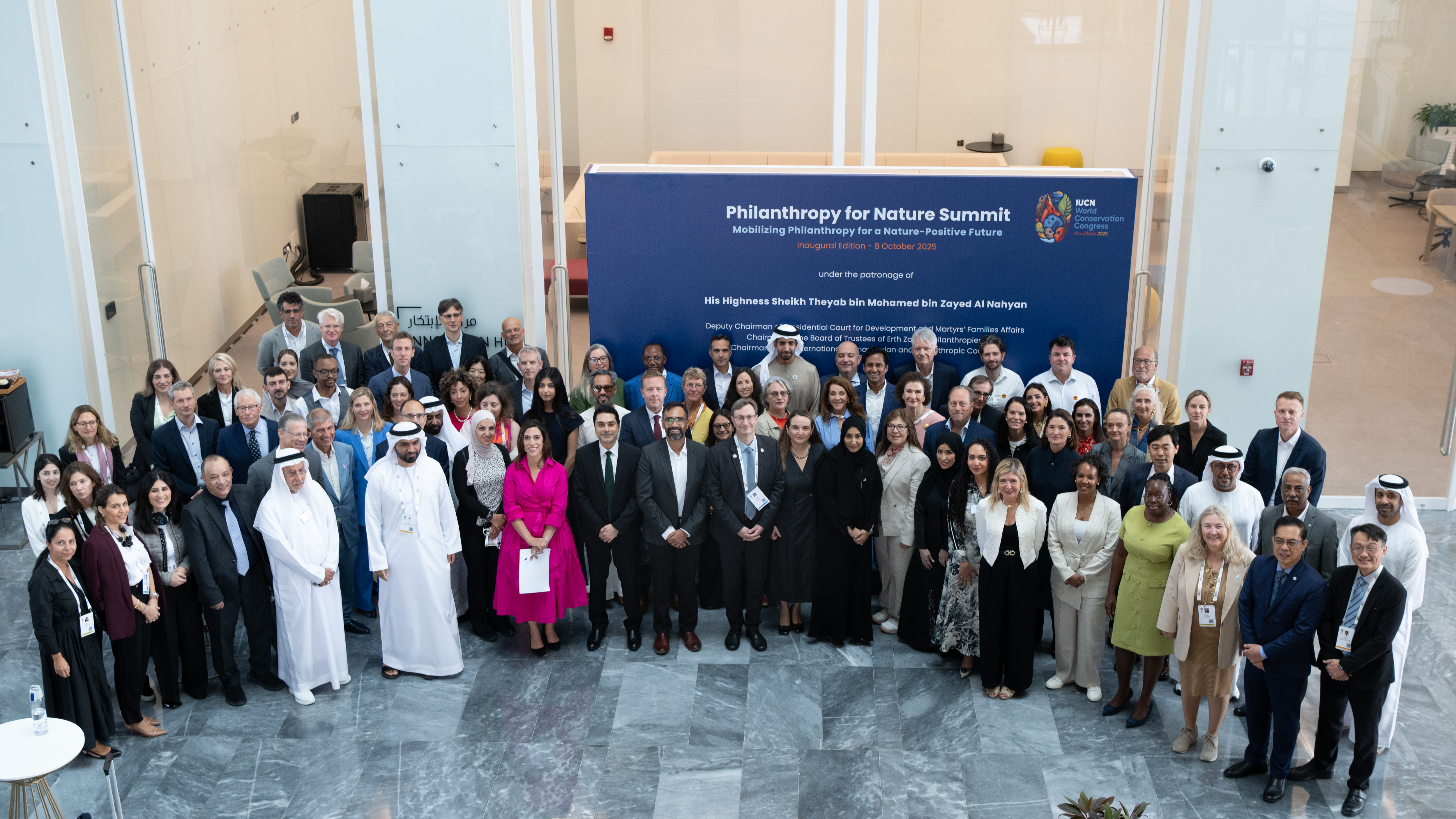 Delta Electronics Foundation CEO Wim Chang (front row, first right) attended the “Nature Philanthropy Summit” and joined other participants for a group photo. (Image source: International Union for Conservation of Nature)
Delta Electronics Foundation CEO Wim Chang (front row, first right) attended the “Nature Philanthropy Summit” and joined other participants for a group photo. (Image source: International Union for Conservation of Nature)
Delta Electronics Foundation CEO Wim Chang was invited to speak at multiple sessions during the Congress, where he shared corporate practices aligned with the Kunming-Montreal Global Biodiversity Framework, along with tangible results in promoting nature-positive investment. He also introduced the application process of the STAR metric in Kenting National Park. The WCC this year also launched several new conservation tools and standards, shifting global conservation goals from “commitment” to “measurable and scalable action.” These included the IUCN RHINO (Rapid High-Integrity Nature-positive Outcomes) methodology and the updated STAR indicator guidelines, both designed to accelerate nature-positive actions and achieve global biodiversity targets. The CEO shared Delta's collaboration experience with IUCN in applying the STAR framework, alongside international speakers on stage.
The CEO shared Delta's collaboration experience with IUCN in applying the STAR framework, alongside international speakers on stage.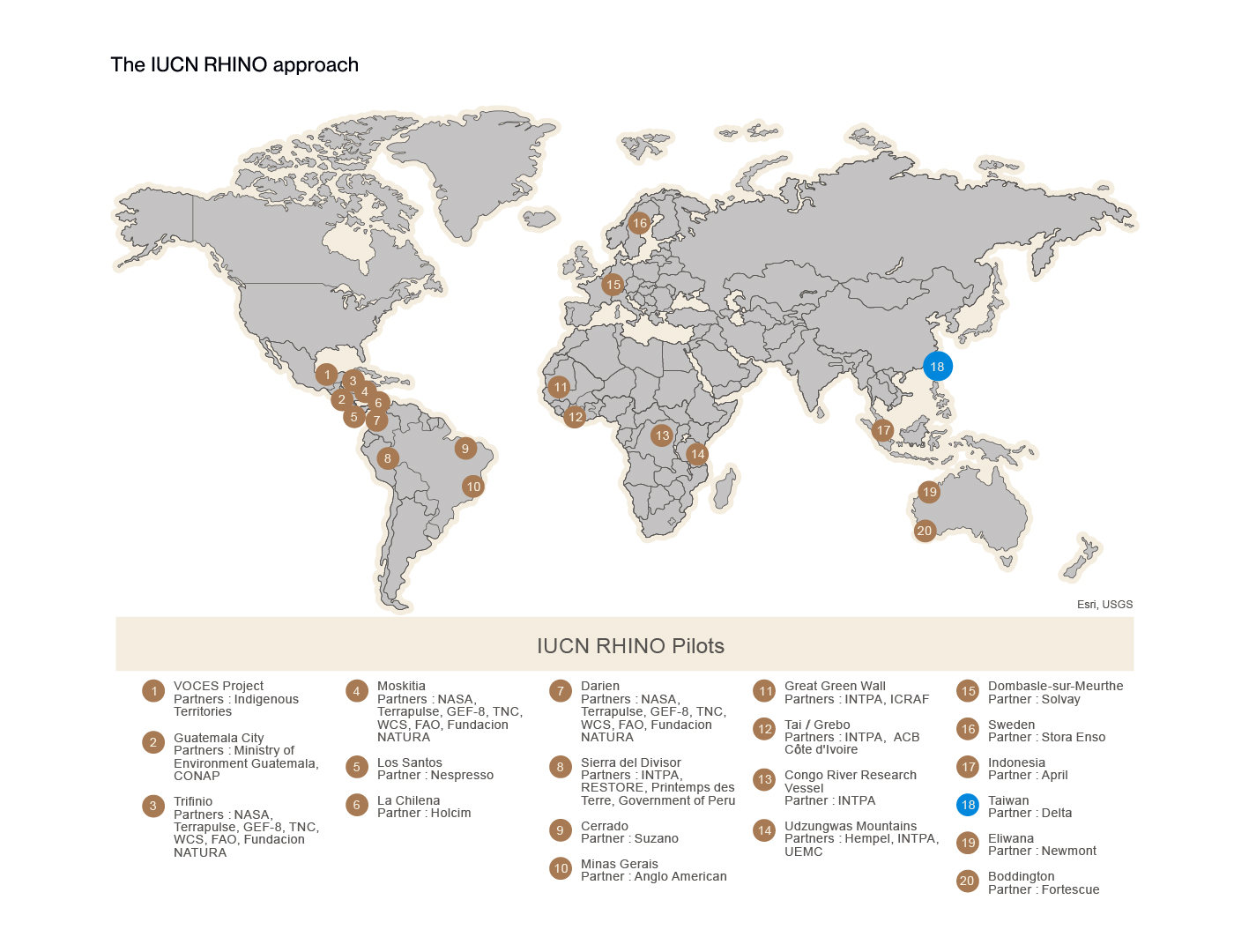 The IUCN RHINO official report listed Delta as the partner organization for Taiwan's pilot site (#18 Taiwan Partner: Delta). (Image source: International Union for Conservation of Nature)
The IUCN RHINO official report listed Delta as the partner organization for Taiwan's pilot site (#18 Taiwan Partner: Delta). (Image source: International Union for Conservation of Nature)
Delta participated in COP30 United Nations Climate Change Conference
Building on the discussions from WCC, Delta further emphasized its “AI for Green” initiative at COP30, showcasing innovative practices that linked technology, nature, and climate action. During the conference, Delta presented its AI applications for coral identification and database development to accelerate species conservation. It also showcased the LEED AI Teaching Assistant, developed by Delta's R&D team, to support the United Nations' Near Zero Emission and Resilient Buildings (NZERB) initiative. This tool helped policymakers and the building community understand the enhanced decarbonization measures in LEED v5 and provided verified case studies of net-zero buildings. This initiative marked the first AI-assisted learning application in the Chinese-speaking world, demonstrating the potential of human-AI collaboration in achieving net-zero and nature-positive goals.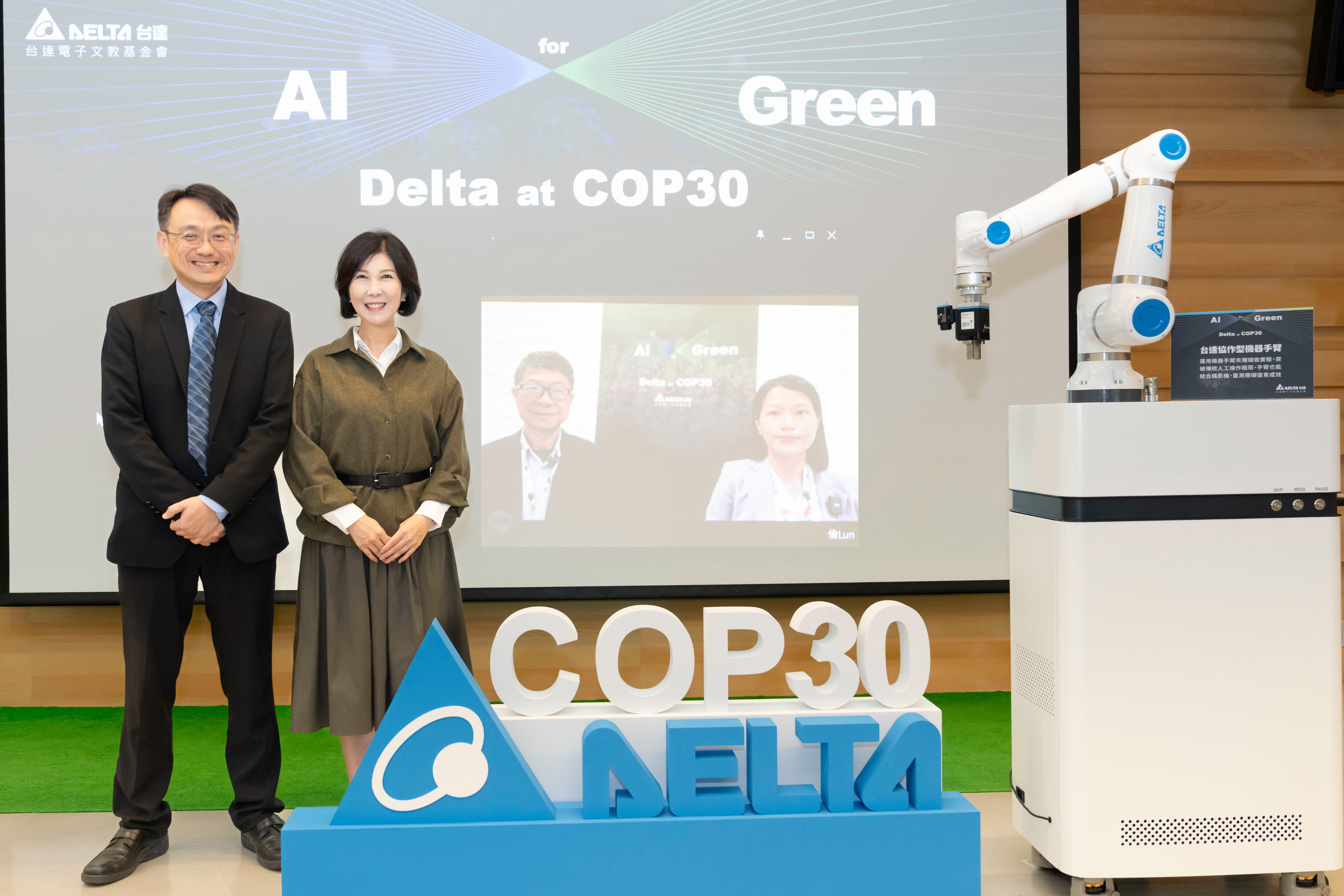 Delta held a pre-COP30 press conference, where Delta Electronics Foundation Vice Chairperson Shan-Shan Guo and CEO Wim Chang took a group photo with colleagues joining from Brazil.
Delta held a pre-COP30 press conference, where Delta Electronics Foundation Vice Chairperson Shan-Shan Guo and CEO Wim Chang took a group photo with colleagues joining from Brazil. Delta Electronics Foundation Vice Chairperson Shan-Shan Guo shared that Delta has participated in the Climate Change Conference for 18 consecutive years, and this year highlights “AI for Green” to support sustainable development.
Delta Electronics Foundation Vice Chairperson Shan-Shan Guo shared that Delta has participated in the Climate Change Conference for 18 consecutive years, and this year highlights “AI for Green” to support sustainable development.
Delta had continuously driven climate action at the UN Climate Conferences for 18 consecutive years, organizing over 30 side events. At COP30, Delta once again obtained official accreditation to host events in the Blue Zone, co-organizing the forum “Climate-Smart Ocean Solutions” with the Plymouth Marine Laboratory (PML), Fondation BNP Paribas, the International Coral Reef Society (ICRS), and the Partnership for Observation of the Global Ocean (POGO). The forum focused on the challenges faced by oceans and coastal communities under climate change, sharing corporate perspectives on using AI technologies and cross-sector collaboration to advance mitigation and adaptation strategies, as well as the latest results in coral restoration. In addition, Delta was invited to speak at the “Buildings and Cooling Pavilion”, co-hosted by the United Nations Environment Programme (UNEP) under the Global Alliance for Buildings and Construction (GlobalABC) and the Cool Coalition. Together with partners including the U.S. Green Building Council (USGBC) and the International Code Council (ICC), Delta discussed digitalization in green and resilient buildings. Delta shared for the first time how its AI teaching assistant supports professional communities in enhancing their green building expertise and accelerating the adoption of sustainable buildings, sparking active discussions among experts at the event. Delta Electronics Foundation CEO Wim Chang (second from left) appeared on stage together with representatives from internationally renowned organizations, including the Plymouth Marine Laboratory in the UK (center), the International Coral Reef Society (second from right), and the Global Ocean Observing System Partnership (far right).
Delta Electronics Foundation CEO Wim Chang (second from left) appeared on stage together with representatives from internationally renowned organizations, including the Plymouth Marine Laboratory in the UK (center), the International Coral Reef Society (second from right), and the Global Ocean Observing System Partnership (far right).
Confronting the dual crises of biodiversity loss and climate change, Delta remains committed to leveraging technological innovation to advance nature-based solutions and amplify its global impact through collaboration. From Abu Dhabi to Belém, Delta applies AI and digital technologies across marine conservation and low-carbon building practices, turning its Nature Positive and Net-Zero Transition visions into real-world action. Going forward, the Foundation will continue working with global partners to foster cross-disciplinary collaboration across science, education, and industry — making technology a driving force in restoring Earth's ecological resilience.




